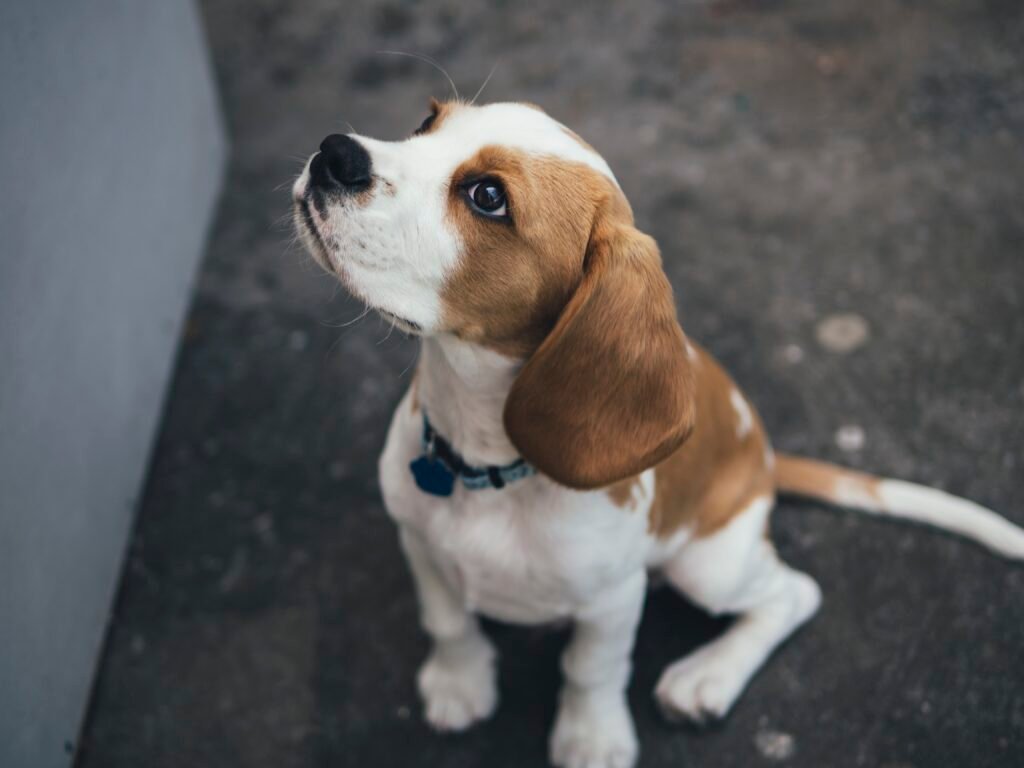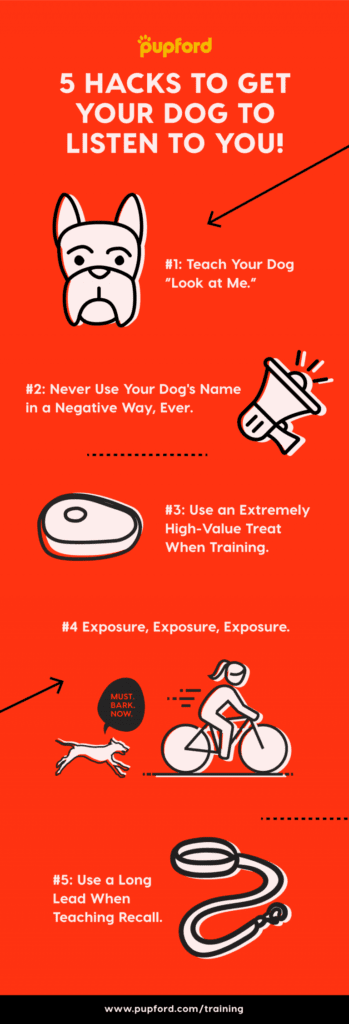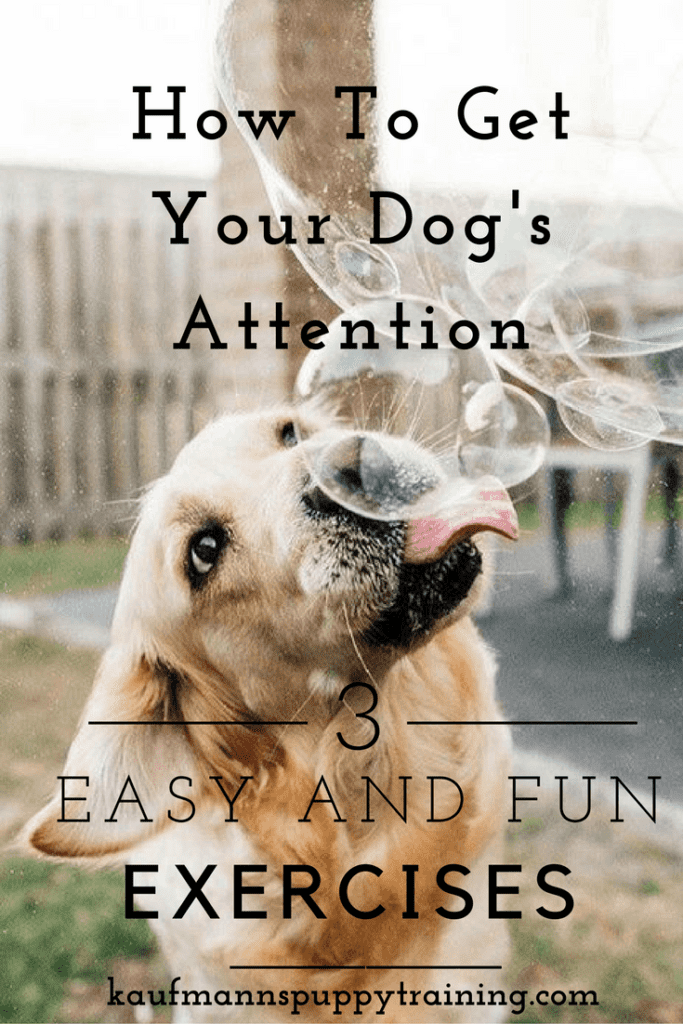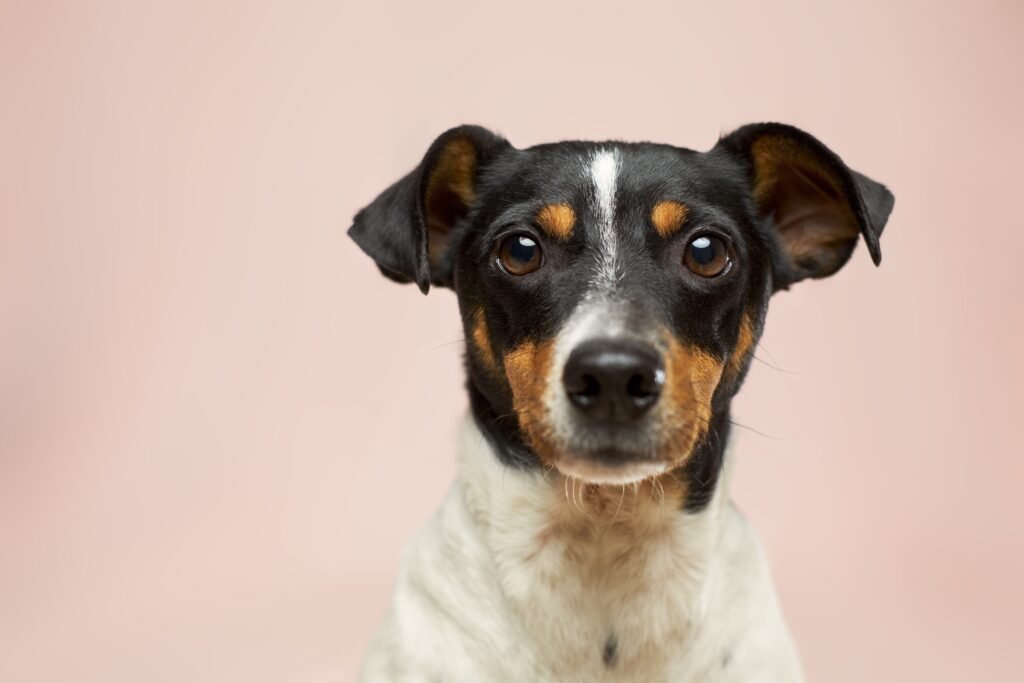Table of Contents
If you’ve ever found yourself frustrated and wondering how to get your furry friend to give you the time of day, look no further. In this article, we will explore five simple tips that will have your dog turning their full attention towards you in no time. From irresistible treats to engaging training exercises, these techniques are designed to strengthen the bond between you and your precious pooch. So, put on your best doggy-parenting hat and get ready to discover the secrets to capturing your dog’s undivided attention.

Use Positive Reinforcement
When it comes to training your dog, positive reinforcement is key. Rewarding good behavior is a powerful motivator for your furry friend. Whether it’s a simple verbal praise, a pat on the head, or a tasty treat, these rewards will let your dog know that they’re doing a great job.
Using treats as a motivator during training sessions can be highly effective. Dogs are food-motivated, so offering a small, bite-sized treat for a correct behavior will help to reinforce the desired action. Make sure to choose treats that your dog finds especially tasty to keep them engaged and excited to learn.
In addition to treats, don’t underestimate the power of praise and affection. Dogs love to be praised and petted, so make sure to lavish them with attention when they exhibit the desired behavior. This positive reinforcement will make them eager to please and more attentive in future training sessions.
Clicker training is another effective method of positive reinforcement. By using a clicker to mark the desired behavior, followed by a treat or praise, your dog will quickly associate the sound of the clicker with a reward. This creates a clear communication between you and your dog and helps to reinforce their attention and focus.
Consistency is key when using positive reinforcement. Make sure to reward your dog consistently for the desired behavior, and avoid rewarding them for unwanted behaviors. By doing so, you are reinforcing the positive behaviors and discouraging the unwanted ones.
Create a Distraction-Free Environment
Creating a distraction-free environment is essential for successful training sessions. By choosing a quiet and calm location, you can minimize external distractions that may divert your dog’s attention. Find a place where you can both focus without disruptions.
In addition to choosing the right location, it’s important to minimize distractions in the surroundings. This means turning off electronics that can create noise or visual distractions. By creating a calm and peaceful environment, your dog will be more likely to pay attention to you and the training session.
Using a leash and collar can provide additional control during training. By keeping your dog on a leash, you can prevent them from wandering off or being distracted by their surroundings. This allows you to maintain their focus and redirect their attention back to the training.
To ensure that your dog’s attention remains strong in different environments, it is important to practice in various settings. By gradually exposing your dog to different surroundings, such as parks or busy streets, you can help them learn to stay focused regardless of the distractions around them.

Establish Eye Contact
Establishing eye contact with your dog is an important part of training and building a strong bond. Teaching your dog to make eye contact on command can help to reinforce their attention and focus on you.
To start, hold a treat near your eye and say a command such as “look” or “watch me”. When your dog looks into your eyes, reward them with a treat and praise. Start with short durations and gradually increase the amount of time your dog maintains eye contact before receiving the reward.
Using a consistent verbal cue for eye contact will help your dog understand what is expected of them. Choose a word or phrase that is easy for you to remember and use it consistently during training sessions. This will help your dog associate the cue with making eye contact and receiving a reward.
Practicing eye contact in different settings and situations will help to generalize the behavior. This means that your dog will learn to make eye contact regardless of the environment or distractions present. By reinforcing eye contact in various contexts, you can ensure that your dog pays attention to you wherever you may be.
Engage in Interactive Play
Interactive play is not only a great way to bond with your dog, but it can also help to improve their attention and focus. By using interactive toys and games, you can encourage your dog to engage with you and stay mentally stimulated.
Using interactive toys that require your dog’s attention, such as puzzle toys or treat-dispensing toys, can be a fun and engaging way to keep your dog focused. These toys challenge your dog’s problem-solving skills and keep them engaged during playtime.
Regularly playing games that require your dog’s attention, such as fetch or hide-and-seek, can also help to improve their focus. By incorporating training exercises into playtime, such as practicing commands or tricks, you can encourage your dog to stay attentive and responsive.
Remember to rotate your dog’s toys regularly to keep them interested and prevent boredom. Introducing new toys or games can also help to keep their attention and focus sharp. Making playtime fun and rewarding will ensure that your dog looks forward to these interactive sessions and pays attention to you.

Train with Short and Structured Sessions
When it comes to training your dog, it’s important to keep the sessions short and structured. Dogs have short attention spans, so keeping the training sessions brief will help to maintain their focus and engagement.
Break down tasks into small steps to make them more manageable for your dog. By teaching them one step at a time and gradually building upon their skills, you can ensure that they fully understand what is expected of them. This approach also allows for more frequent opportunities to reward and reinforce their good behavior.
Repetition and consistency are key when training your dog. By consistently practicing the same commands and behaviors, your dog will become familiar with what is expected of them. This repetition helps to reinforce their understanding and promotes faster learning.
Creating a training schedule and sticking to it is crucial for effective training. Consistency is key, so make sure to set aside dedicated time each day for training sessions. By establishing a routine, your dog will come to expect and look forward to their training sessions, making them more attentive and focused.
Always end each training session on a positive note. Finish with a simple command that your dog knows well and will excel at, so they can finish the session feeling successful and rewarded. This positive conclusion will leave them eager for the next training session.
Use Hand Signals and Body Language
In addition to verbal commands, using hand signals and body language can greatly enhance your communication with your dog. Dogs are highly observant of human body language, so incorporating non-verbal cues can help to reinforce their understanding and attention.
Teaching your dog to respond to specific hand signals is a valuable skill that can be used in various situations. Start by associating a hand signal with a command that your dog already knows well. Gradually decrease the use of the verbal command and rely solely on the hand signal to elicit the desired response.
Consistent body language cues are important for clear communication. Make sure that your body language aligns with what you are asking your dog to do. For example, if you want your dog to sit, maintain an upright posture and use a downward hand gesture. Through practice and repetition, your dog will understand and respond to these cues.
Pairing verbal commands with corresponding gestures can further enhance your dog’s understanding. This dual reinforcement helps to strengthen their attention and ensures that they respond to both the verbal and non-verbal cues.
Reward and reinforce correct responses to hand signals and body language cues. By praising and rewarding your dog when they respond correctly, you are reinforcing the desired behavior and motivating them to continue paying attention to your cues.
Gradually reducing dependence on verbal cues is a goal to strive for. As your dog becomes more proficient in understanding and responding to hand signals and body language, you can rely less on verbal commands. This will further sharpen their attention and focus on your physical cues.

Incorporate Mental Stimulation
Engaging your dog’s mind is just as important as physical exercise when it comes to training and attention. Incorporating mental stimulation into your dog’s routine can keep them mentally sharp and attentive.
Give your dog puzzle toys and interactive feeders to encourage problem-solving and mental agility. These toys require your dog to think and strategize to access their reward, which can greatly enhance their focus and attention.
Teaching your dog new commands and tricks provides mental stimulation as well. Learning new skills challenges their brain and keeps them engaged during training sessions. Keep the sessions short and positive, rewarding your dog for their efforts and achievements.
Scent-based games and nose work can be a valuable way to engage your dog’s mind. Hide treats or toys around the house or in the yard and encourage your dog to use their sense of smell to find them. This type of game taps into their natural instincts and provides a mentally stimulating activity.
Enrolling in obedience or agility classes is another way to incorporate mental stimulation into your dog’s routine. These classes provide structured training sessions and new challenges that require your dog’s attention and focus. Additionally, interacting with other dogs and handlers in a class setting helps to reinforce good social behavior.
It is important to rotate and introduce new activities regularly to keep your dog’s attention and focus sharp. Dogs thrive on novelty, so by providing new and varied mental stimulation, you can prevent boredom and maintain their interest.
Maintain a Calm Demeanor
During training sessions, it’s crucial to maintain a calm and composed demeanor. Dogs are highly attuned to their human’s emotions, so remaining calm and collected will help to keep your dog focused and attentive.
Avoid showing frustration or impatience when your dog doesn’t immediately respond as expected. Losing your temper or becoming impatient can create stress and negatively impact their ability to concentrate. Instead, take a deep breath and approach the training session with a positive and patient attitude.
Use a soothing tone of voice to command your dog’s attention. Dogs respond better to calm and gentle tones, so speaking to them in a relaxed manner will encourage their focus and attentiveness. Avoid yelling or raising your voice, as this can intimidate or confuse your dog.
Practice deep breathing exercises to relax yourself before and during training sessions. By staying calm and centered, you are better able to convey clear instructions and maintain your dog’s attention. Deep breathing also helps to regulate your own emotions, ensuring a positive and productive training session.
Be the calm and confident leader that your dog needs. Dogs look to their humans for guidance and reassurance, so maintaining a calm and confident demeanor helps to establish your role as the one in charge. This will foster a sense of trust and security in your dog, encouraging them to pay attention and follow your lead.

Consider Professional Training
If you find yourself struggling to keep your dog’s attention or if you want to take their training to the next level, considering professional training is a great idea. Seeking guidance from a professional dog trainer can provide valuable insights and techniques to improve your dog’s focus and attention.
Enrolling your dog in obedience classes can be highly beneficial. These classes offer structured training sessions led by experienced trainers who can address specific issues or challenges you may be facing. They can provide personalized advice tailored to your dog’s individual needs.
A professional dog trainer can teach you advanced training techniques that you may not be familiar with. These techniques can help to further enhance your dog’s attention and focus. Whether it’s advanced obedience, agility training, or specialized tasks, a professional trainer can guide you in teaching your dog new and challenging skills.
Having an expert assess your dog’s behavior can provide valuable insights and recommendations. They can help identify any underlying issues that may be affecting your dog’s attentiveness and offer strategies to address these issues. Their expertise and experience can be an invaluable resource in improving your dog’s training and attention.
Be Patient and Consistent
Training takes time and effort, so it’s important to be patient and consistent throughout the process. Your dog is learning and trying their best, so celebrate every small achievement along the way.
Realize that training is a gradual process and that not every day will be perfect. There will be setbacks and challenges, but it’s important to stay positive and motivated. Remember that each training session is an opportunity for your dog to learn and improve their focus and attention.
Stay consistent with your training methods. Dogs thrive on routine and consistency, so using the same commands, rewards, and techniques will help them understand what is expected of them. Avoid giving mixed signals or changing your rules, as this can confuse your dog and make it harder for them to pay attention.
Celebrating small achievements is crucial for your dog’s motivation and confidence. Whether it’s mastering a new command or maintaining eye contact for an extended period, make sure to praise and reward your dog for their accomplishments. This positive reinforcement will encourage them to continue paying attention and striving to do their best.
Maintain a positive and patient attitude throughout the training process. Your energy and emotions can greatly influence your dog’s behavior and attentiveness. By approaching each training session with enthusiasm and patience, you are setting the stage for success and demonstrating to your dog that training is a fun and rewarding activity.
In conclusion, getting your dog to pay attention is a combination of positive reinforcement, creating a distraction-free environment, establishing eye contact, engaging in interactive play, training with short and structured sessions, using hand signals and body language, incorporating mental stimulation, maintaining a calm demeanor, considering professional training if needed, and being patient and consistent. By implementing these tips and techniques, you can enhance your dog’s attention and focus, creating a stronger bond and more effective training sessions. Remember, training should be a positive and enjoyable experience for both you and your dog, so have fun and celebrate the progress you make together.



